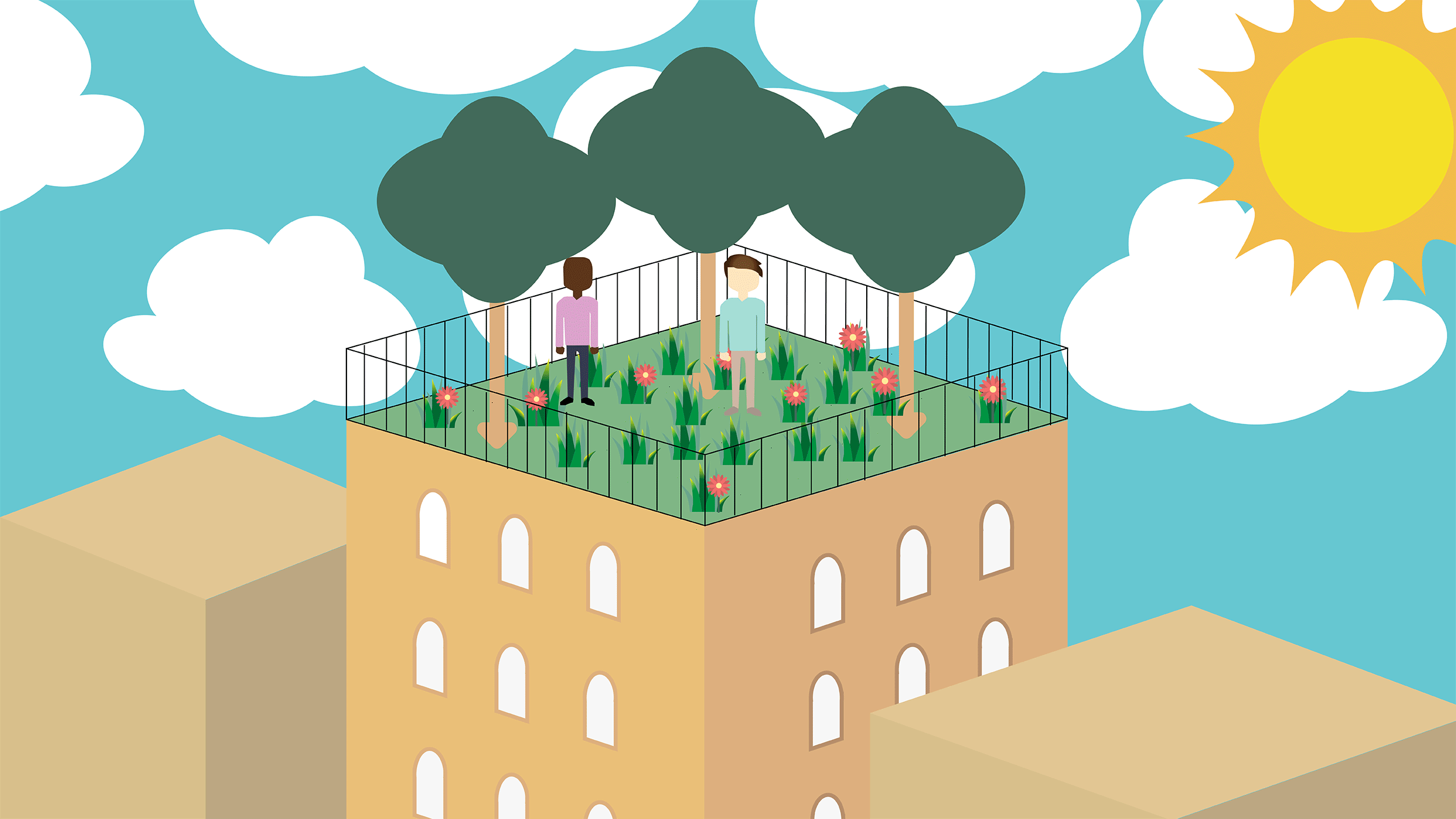By Charlize Alcaraz
Hitesh Doshi, an architectural science professor at Ryerson, has been doing extensive research on roof technology. His findings have led to the discovery that there are many ways rooftops can be environmentally efficient, rather than just vacant spaces.
After calling for action through research, Doshi played an important role in establishing a new bylaw that required new buildings to have green roofs.
According to Architecture Lab, “vegetative roofs are a design in which plants are used to create a green space on top of a building.” In this sense, green roofs can also be vegetative ones that allow urban farming.
“Our report was researching the impact of green roofs on buildings and so they took that and developed the bylaw,” said Doshi.
Thanks to Doshi, the city mandates that new buildings greater than 2,000 square metres in gross floor area are required to have a green roof. That is one and one-third times as big as a hockey rink, per NHL standards.
Specifically, green roofs are required on new commercial, institutional and residential developments with a minimum gross floor area of 2,000 square metres; new additions to commercial, institutional and residential development where the new gross floor area added is greater than 2,000 sq. m and; industrial buildings greater than 2,000 sq. m gross floor area.
If buildings have to have a smaller amount of green roof than required, the building administrators would have to pay $200 per square metre of the reduced green roof area according to the bylaw.
According to the city of Toronto’s website, “all funds collected…will be directed to the city of Toronto Eco-Roof Incentive Program.” This program provides grants for the installation of green roofs and cool roofs on Toronto homes and buildings.
Green roofs offer a lot of benefits for the environment—some of their advantages include promoting biodiversity as well as managing stormwater, Doshi said.
“If you want to look at biodiversity, we still need to look at having some sort of vegetation system, which would mean a green rooftop on top of a building,” said Doshi. “Biodiversity is the goal and so a vegetative roof is something that would be considered.”
Ryerson has its own urban farm at the top of the George Vari Engineering and Computer Centre with over 50 crops, more than 100 cultivars and three beehives. According to Ryerson Urban Farm, another rooftop farm is also being constructed on the rooftop of the Daphne Cockwell Health Sciences Complex.
Rooftops as stormwater management areas
“A lot of rooftops are simply collecting water and putting it into the stormwater system—and something needs to be done about it,” Doshi said in an interview with Ryerson.
The solution Doshi and his team at Ryerson Urban Water (RUW) are exploring is the use of green roofs which can reduce stormwater runoff and energy consumption.
Stormwater—water that comes from rain, snow and ice melt—has a lot of negative impacts on the environment.
According to the city of Vaughan’s information webpage on stormwater, excess runoff on flat surfaces such as pavements can pick up pollutants before flowing into drainages. Since most pavements are not permeable, the water is not filtered and the polluted water flows into rivers and lakes that supply drinking water.
Green roofs reduce stormwater runoff so less of it is directed into drains that lead to waterways. The incoming precipitation of water hydrates the green roof plants and slows down the runoff of rainwater into the ground where it cannot be absorbed.
“By controlling the water that goes into the receiving bodies in the first place, like not letting [stormwater] go there…we are protecting our water bodies and, in the right way, protecting our water resources,” said Doshi.
While Doshi led the team of people from Ryerson that paved the way to creating the green roof bylaw in Toronto, now they’re exploring the limitations that green roofs may have and how “blue roofs” can be adapted instead.
Ecogardens describe blue roofs as “non-vegetated source controls that detain stormwater.” Small dams along the roof create a temporary pond and gradually release the water.
“Stormwater is becoming a greater issue now and there are some limitations with respect to green roofs…it’s not always possible to put a green roof down for existing buildings,” said Doshi.
Credit Valley Conservation Authority is working with Doshi’s team at RUW to implement a blue roof system into their headquarters. This is part of a study that Ryerson is a part of and they want to build a template for eventually implementing blue roofs on industrial, commercial and institutional buildings across the GTA.
Scott Addison, a major real estate broker, told The Globe and Mail that green roofs attract rodents and insects. This could affect the industrial buildings in the city that are involved in the food industry.
“It was an easy win for the city because it is hard to argue against anything that helps preserve the environment, but green roofs have all kinds of implications that don’t seem to have been considered and worked out,” said Addison.
Rooftops can offer a safe social place during the COVID-19 pandemic
“There’s a lot of community types of buildings…that have a social place where they’re allowing people to have plots of land where they can do some urban farming,” said Doshi. “Those kinds of things will impact biodiversity and the vegetation.”
One other purpose of rooftops that came with the COVID-19 pandemic is for an open space social area where people can socialize safely in open air.
“Look at COVID for example, in a lot of highrise buildings, wouldn’t it have been nice if there was a rooftop area where people can just go and it’s an open space right?” said Doshi.
Rooftops can become more than just vacant space if it is put to the advantage of not only allowing for recreational use but for a greener environment as well.
“You already have a rooftop, so can you do something about it?”











Leave a Reply